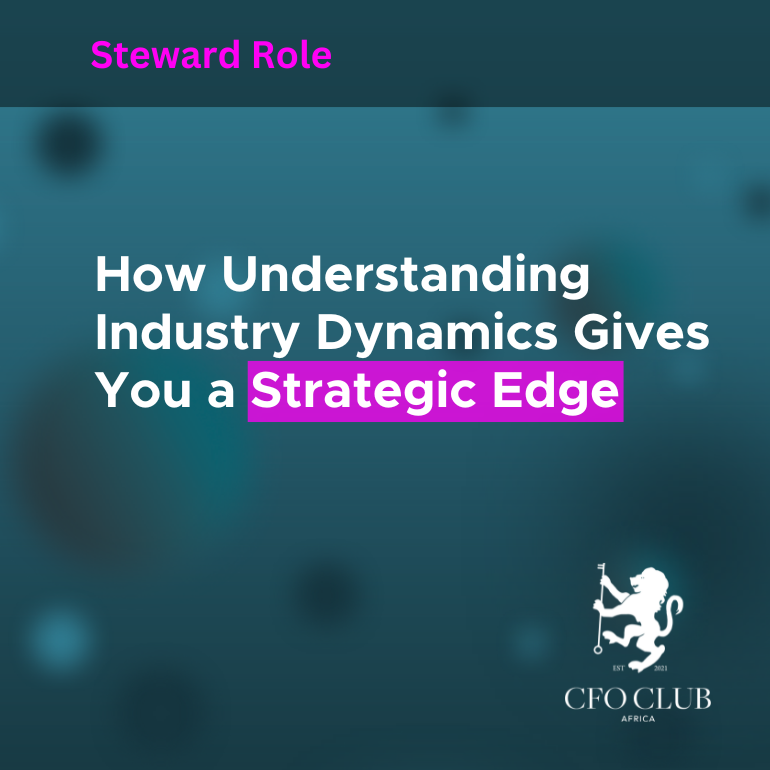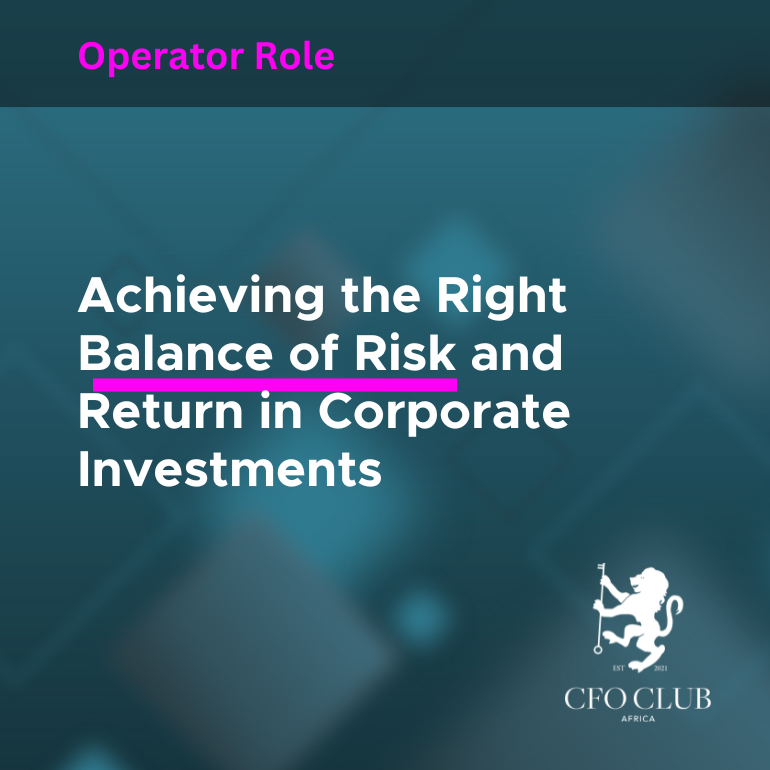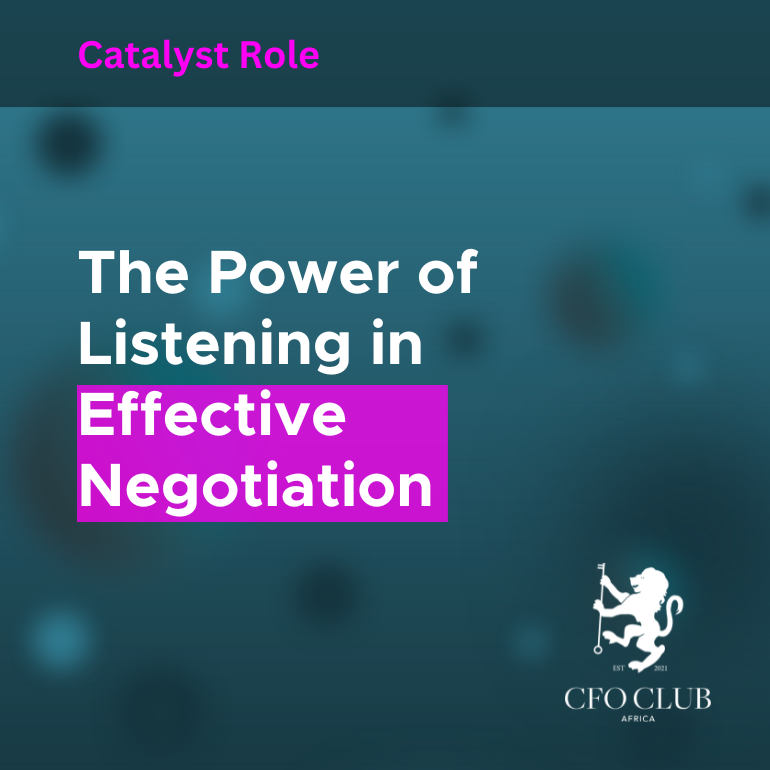How Understanding Industry Dynamics Gives You a Strategic Edge
How Understanding Industry Dynamics Gives You a Strategic Edge
Most finance professionals spend their days buried in budgets, forecasts, and board packs—but those who rise above the rest understand the bigger picture: the dynamics shaping their industry. Whether you’re in agriculture, fintech, healthcare, manufacturing, education, or professional services, one truth holds firm—if you can read the game, you can change it.
Too many CFOs and finance leaders focus only on internal numbers. But when you know what’s happening outside your organisation—what your competitors are doing, how your customers are shifting, where your industry is heading—you stop reacting and start shaping strategy. That’s how you become the person the CEO turns to for direction, not just data.
What are Industry Dynamics, Really?
Think of industry dynamics as everything swirling around your business: changing customer needs, disruptive tech, new regulations, supplier relationships, global shocks, and competitors entering or exiting the game. These aren’t background details—they’re the currents that carry your business forward (or sink it).
In South Africa, industry dynamics are particularly powerful. Load shedding doesn’t just affect the energy sector, it rewrites the cost base of every factory, restaurant, and data centre. A single SARS regulation change can turn a profitable business into a compliance nightmare. The introduction of AI-driven tools is already shifting how services are delivered, priced, and consumed across industries.
These shifts don’t wait for your next board meeting. They just happen. The question is, will you spot them in time?
Why Should You Care?
Because understanding these shifts is the difference between:
- Taking bold, confident decisions—or hesitating too long
- Seeing an opportunity early—or being left behind
- Being a number cruncher—or a strategic force
For finance leaders, this isn’t theoretical, it’s survival. If you’re in commerce, it means advising your exec team on how to pivot before the market forces your hand.
A CFO who understands industry dynamics doesn’t just react to line items. They guide investment decisions, pricing strategies, risk management, and even organisational design. They turn insight into action—and action into advantage.
From Awareness to Advantage
So how do you actually do this? How do you stay tuned in to what’s shifting in your world?
It’s not about reading 20 reports a week. It’s about being deliberate, curious, and connected:
- Talk to your clients or customers. Their frustrations often signal broader shifts.
- Watch competitors move not just what they say, but where they spend.
- Stay close to your suppliers. They often feel disruptions first.
- Join industry-specific WhatsApp groups or LinkedIn communities. The conversations are raw and revealing.
- Don’t dismiss what younger staff are excited about, it often signals a cultural or tech shift on the way.
You don’t need to become an economist. You just need to develop a nose for patterns—and pay attention when something starts to smell different.
A Real-World Example: Netflix Didn’t Just Crunch Numbers
Let’s step outside accounting for a moment and look at a global example that captures this idea perfectly: Netflix.
Before it was a streaming giant, Netflix mailed DVDs. It wasn’t the cheapest service. It didn’t have the biggest catalogue. What gave it the edge was this: it saw the shift coming. Netflix recognised two things before most competitors:
- People were tired of physical rentals and late fees.
- Broadband access was improving fast enough to support streaming.
So it moved. It took the leap into streaming before the numbers could give absolute certainty. And when everyone else caught up, it moved again—this time into content production. Netflix didn’t wait for perfect data. It read the direction of travel and took action. That’s what understanding industry dynamics looks like in real life.
It’s the same mindset CIBA members need: don’t just analyse the now—scan for what’s next.
What’s at Stake?
Let’s be blunt—no one pays extra for ignorance. Your executive team might not say it out loud, but they expect you to know more than just IFRS or VAT returns. They expect you to understand what’s happening in their world—and to help them navigate it.
A CFO who sees changes coming can prepare the business. That might mean:
- Building cash reserves ahead of a downturn
- Investing in automation before wage pressures hit
- Exiting markets that are about to tighten due to regulation
- Launching a new service line because competitors are asleep at the wheel
These moves don’t come from instinct. They come from insight.
And here’s the real kicker—if you’re not doing this, someone else is. The one who understands the industry becomes the one who leads the strategy sessions, not just the reporting meetings. That’s where influence (and earnings) lie.
Final Word
Understanding industry dynamics isn’t about sounding clever, it’s about staying relevant, valuable, and one step ahead. It’s about making better, faster decisions. It’s about seeing risks before they hit and spotting opportunities while they’re still affordable.
The bottom line is simple: you can’t afford to fly blind. The better you understand your industry, the better you serve, lead, and grow.
So lift your eyes from the spreadsheet. Ask different questions. Read outside your usual bubble. And remember—the more you know about the road ahead, the more control you have over the journey.





